If you click “Continue” below, you will leave the current site and be taken to a site maintained by a third party that is solely responsible for its content. Amgen provides this link as a service to website visitors. Amgen is not responsible for the privacy policy of any third-party websites. We encourage you to read the privacy policy of every website you visit.
* This resource is only intended for use by healthcare professionals with their patients for educational purposes
Atherosclerosis and
Plaque Vulnerability
Click to see the stages of disease in motion
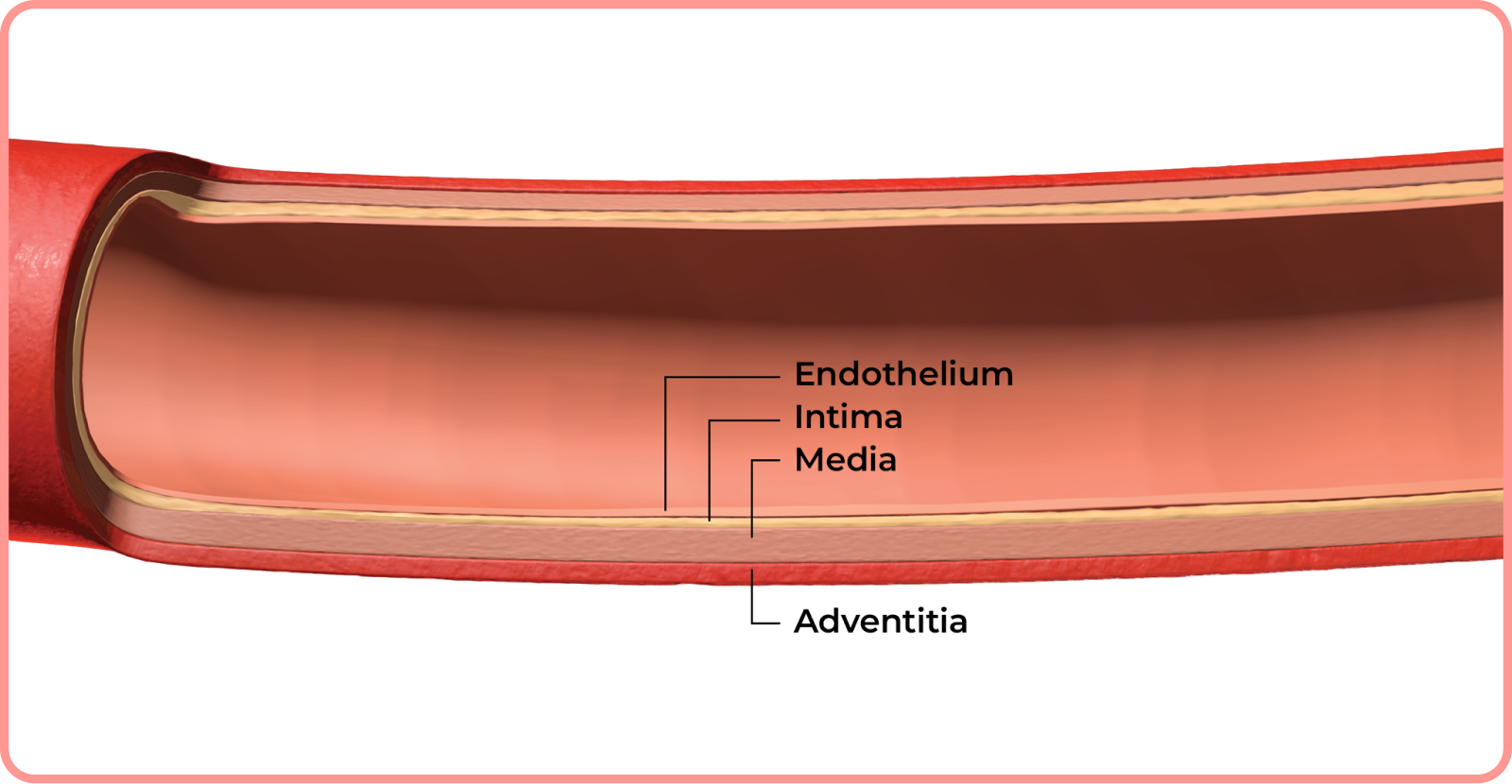
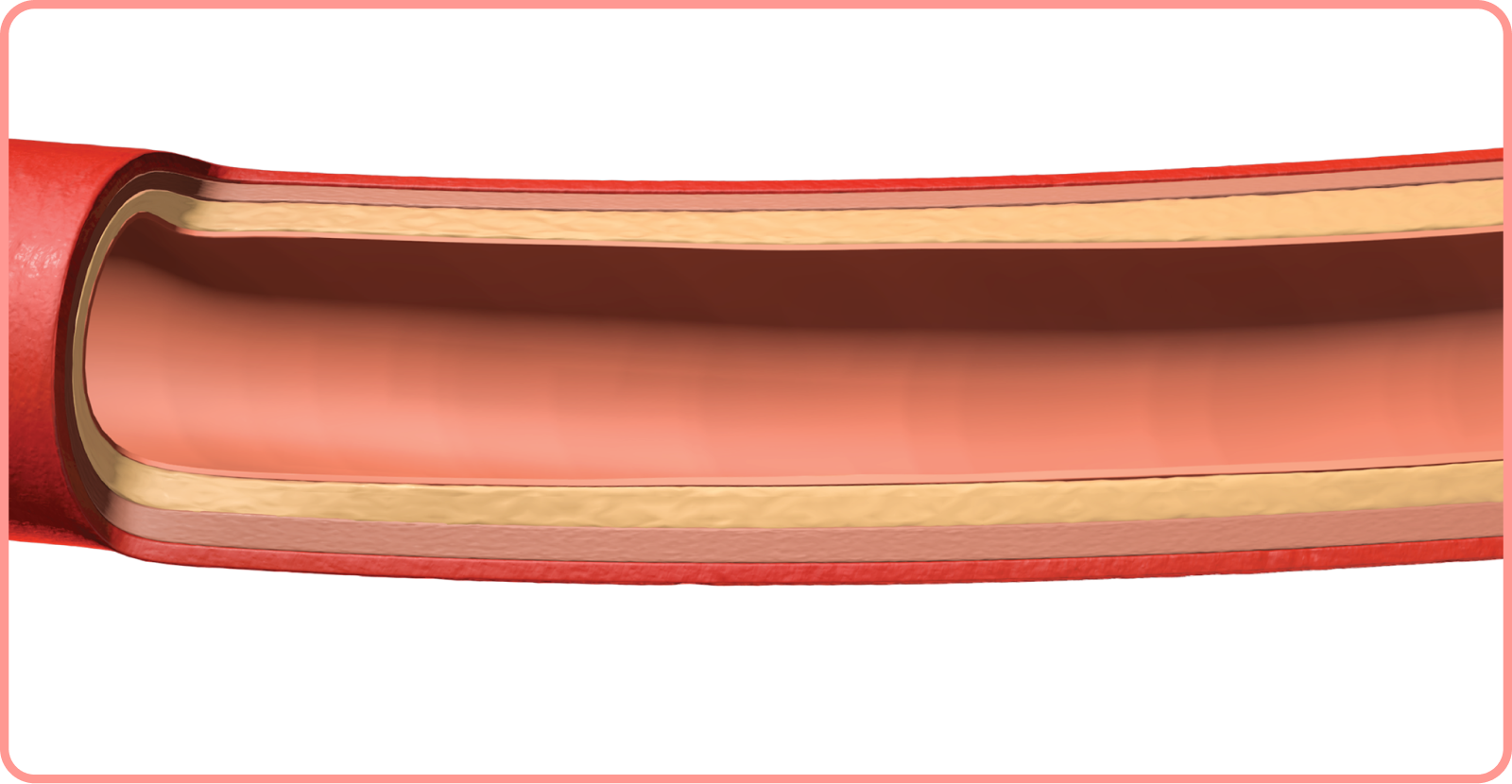
SMC, smooth muscle cell.
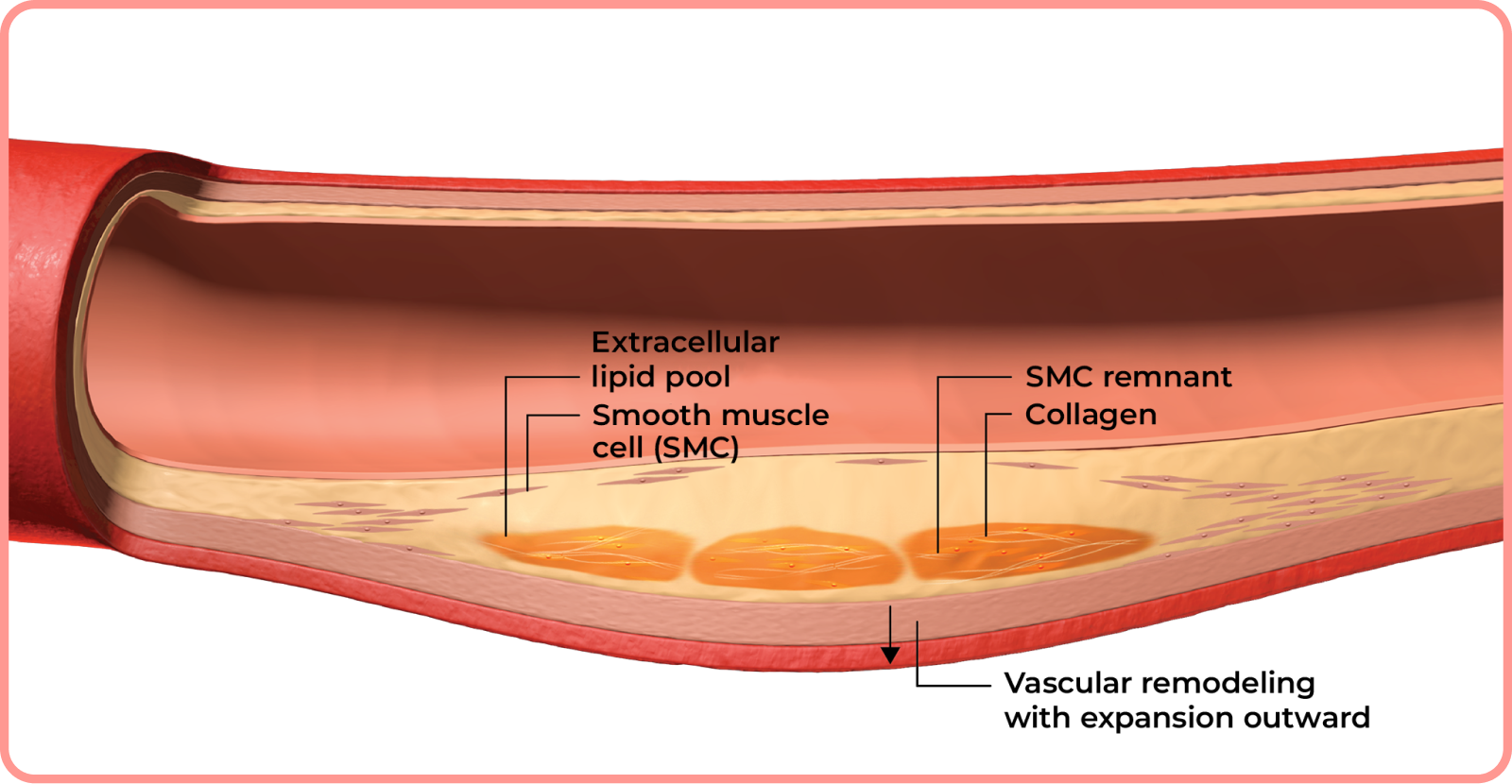
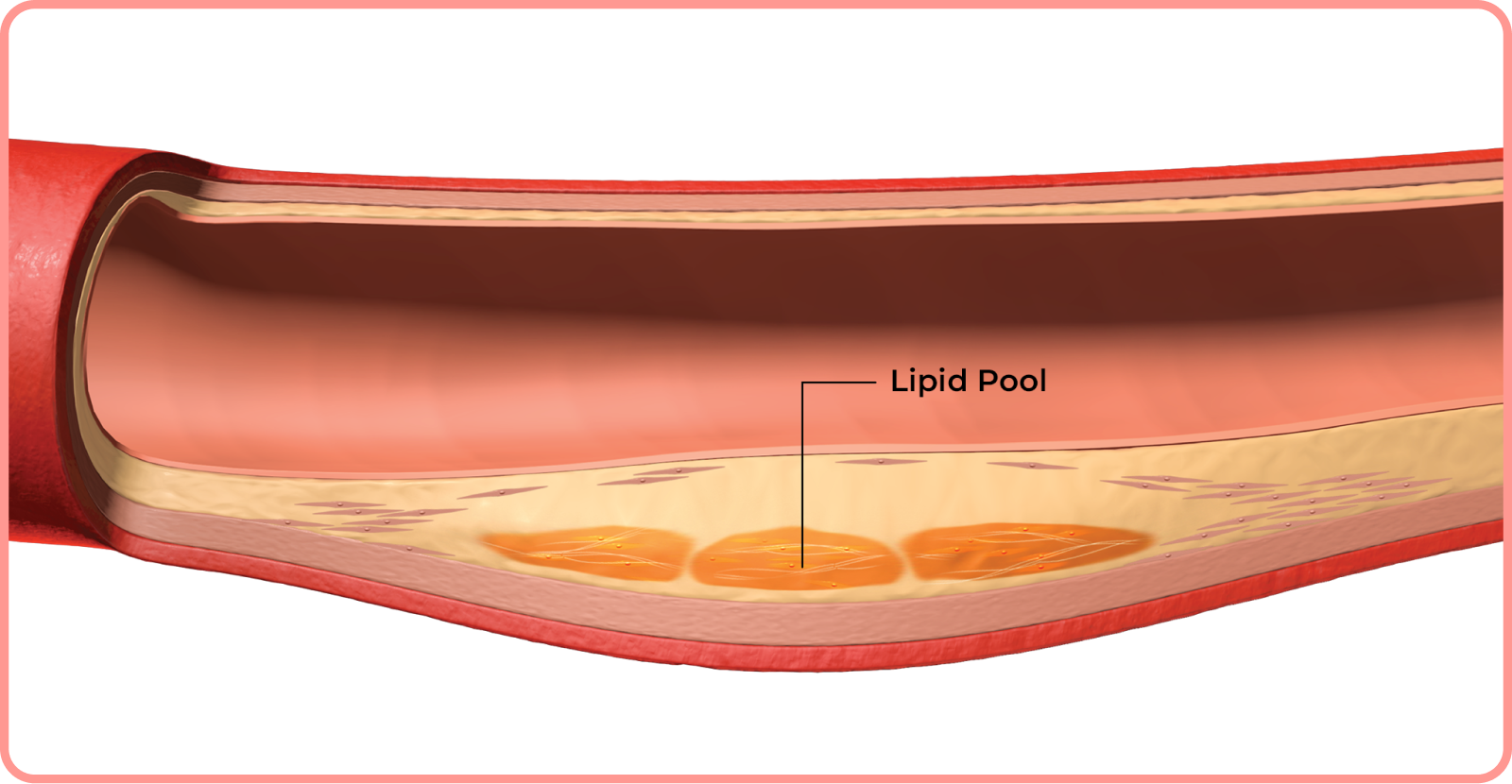
SMC, smooth muscle cell.
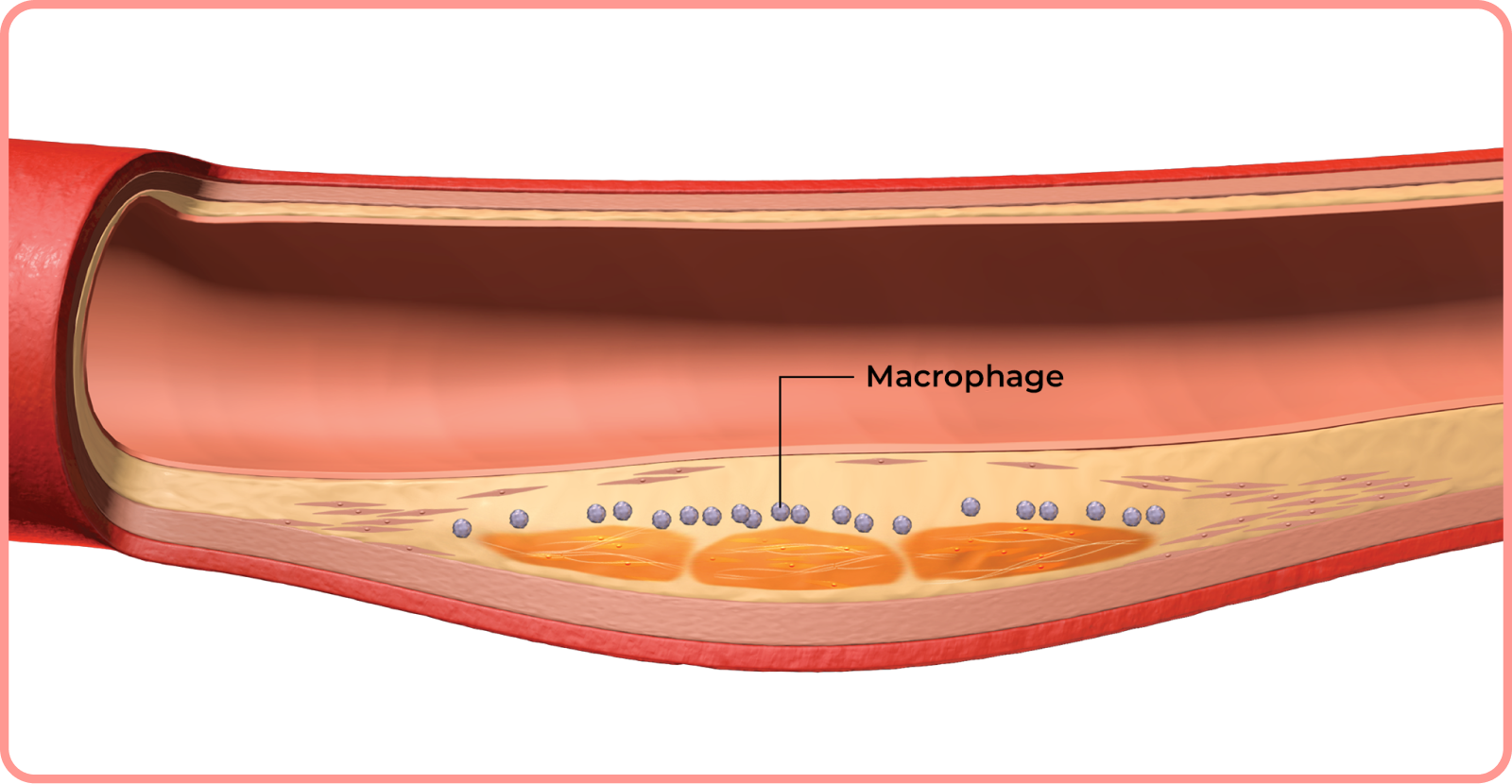
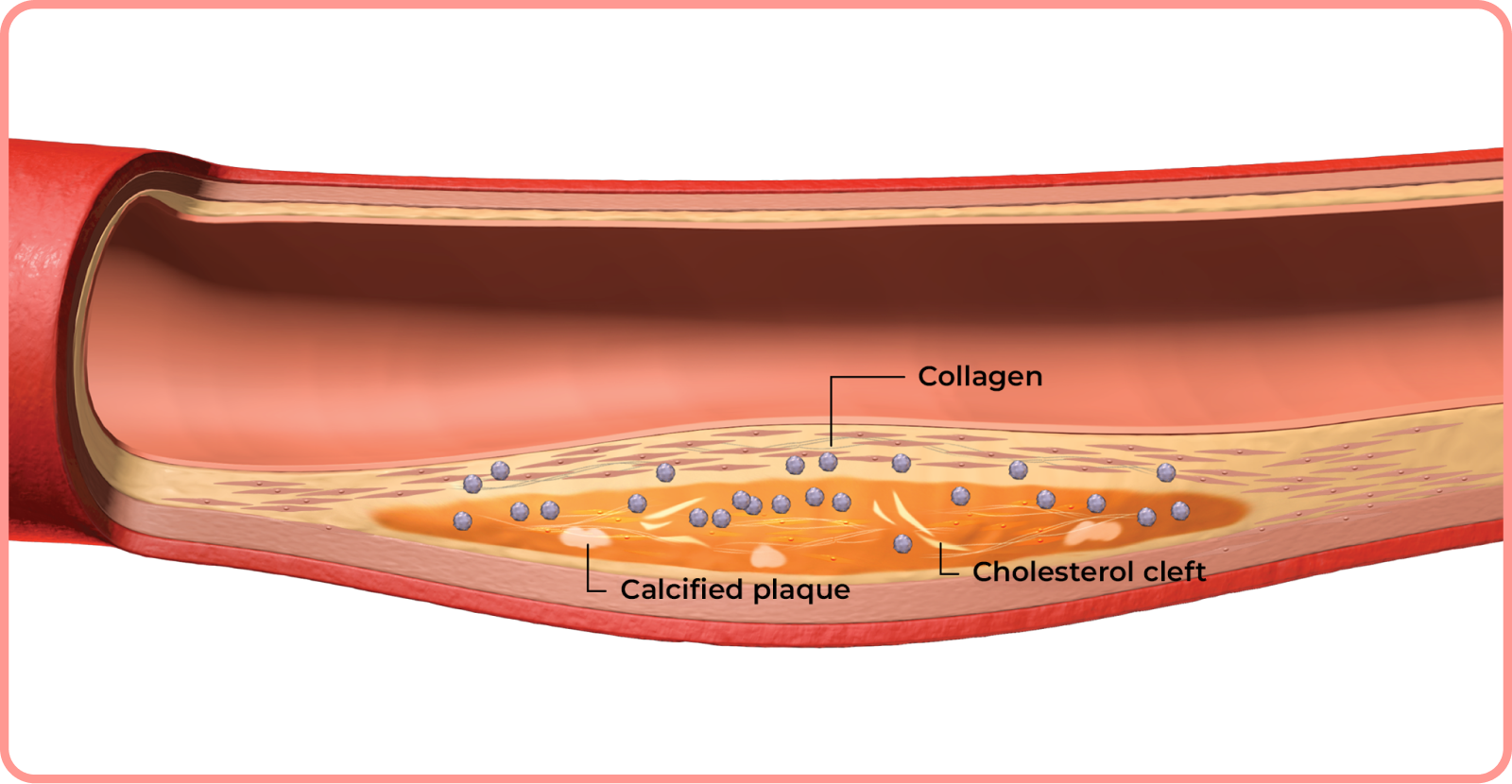
The lipid pool continues to grow as more foam cells take up LDLs, degrade, and add to existing lipid deposits.1-3
As SMCs and foam cells die and degrade, they form small calcified plaques within the lipid pool.1-3
Cholesterol clefts, comprised of free cholesterol, also start to form in the lipid pool.1-3
LDL, low-density lipoprotein; SMC, smooth muscle cell.
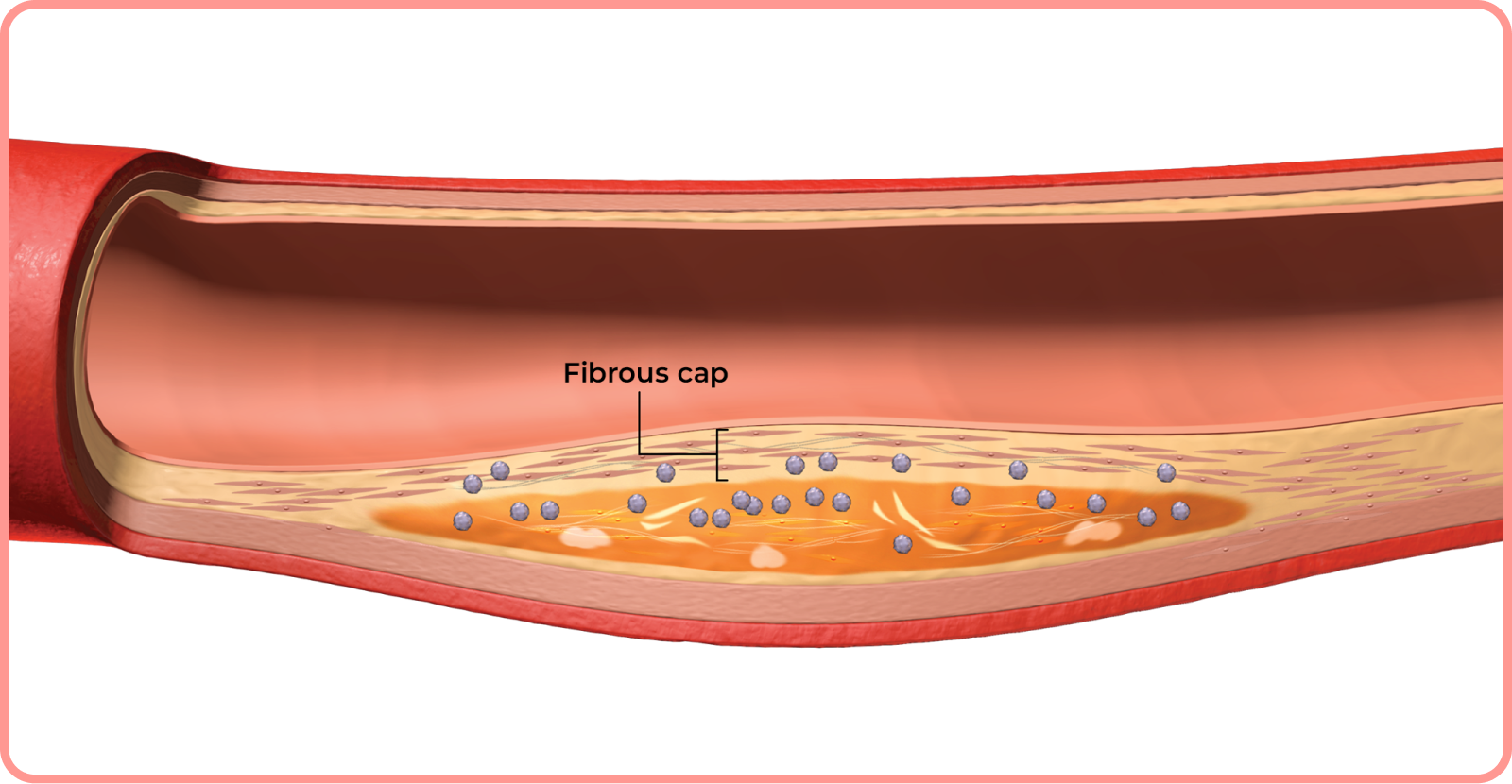
SMC, smooth muscle cell.
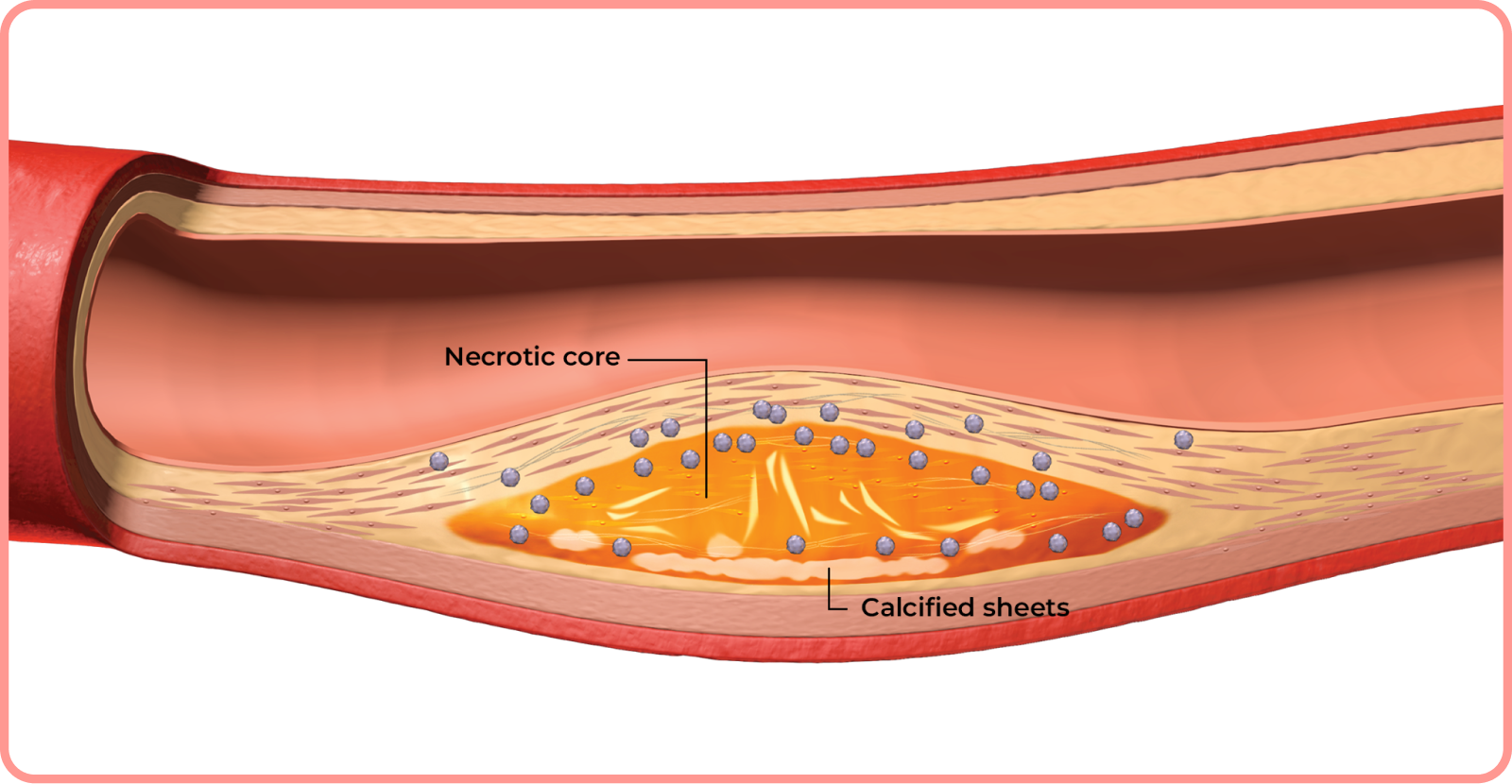
As atherosclerosis progresses, a late-stage fibroatheroma forms. Its hallmark feature is a necrotic core comprised of dead SMCs and foam cells, and cholesterol clefts.1-4
Calcified plaques also accumulate in the lipid pool to form calcified sheets.1,3,4
SMC, smooth muscle cell.
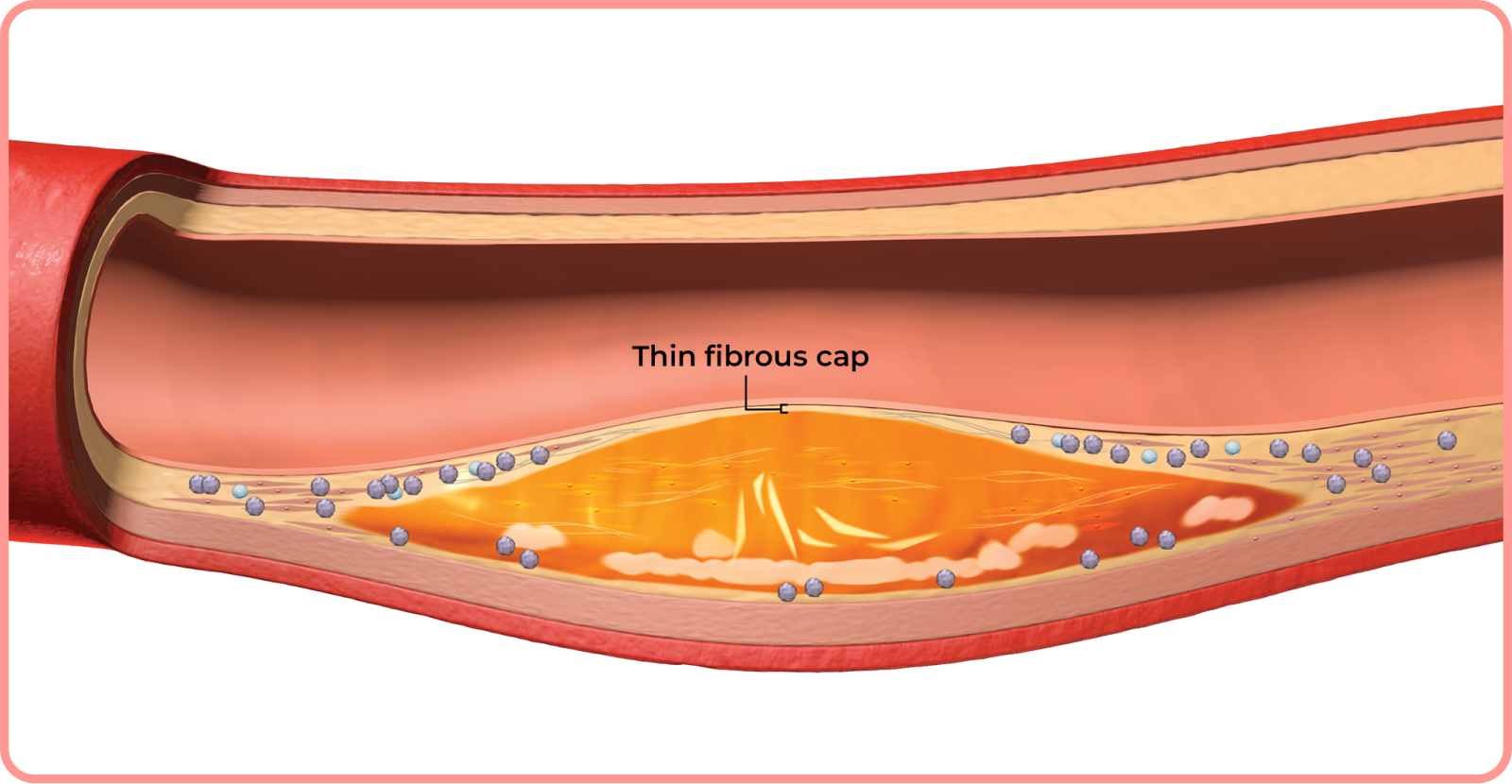
Exposure to increased LDL-C, continued inflammation, and cell death make the fibrous cap vulnerable to thinning and rupture.1-4
Thin-cap fibroatheromas, or vulnerable plaques, emerge in advanced atherosclerosis. They have a large necrotic core with a thinning but intact fibrous cap (<65μm thickness) and a lipid arc greater than 90 degrees as measured by optical coherence tomography.1-4
LDL-C, low-density lipoprotein - cholesterol.
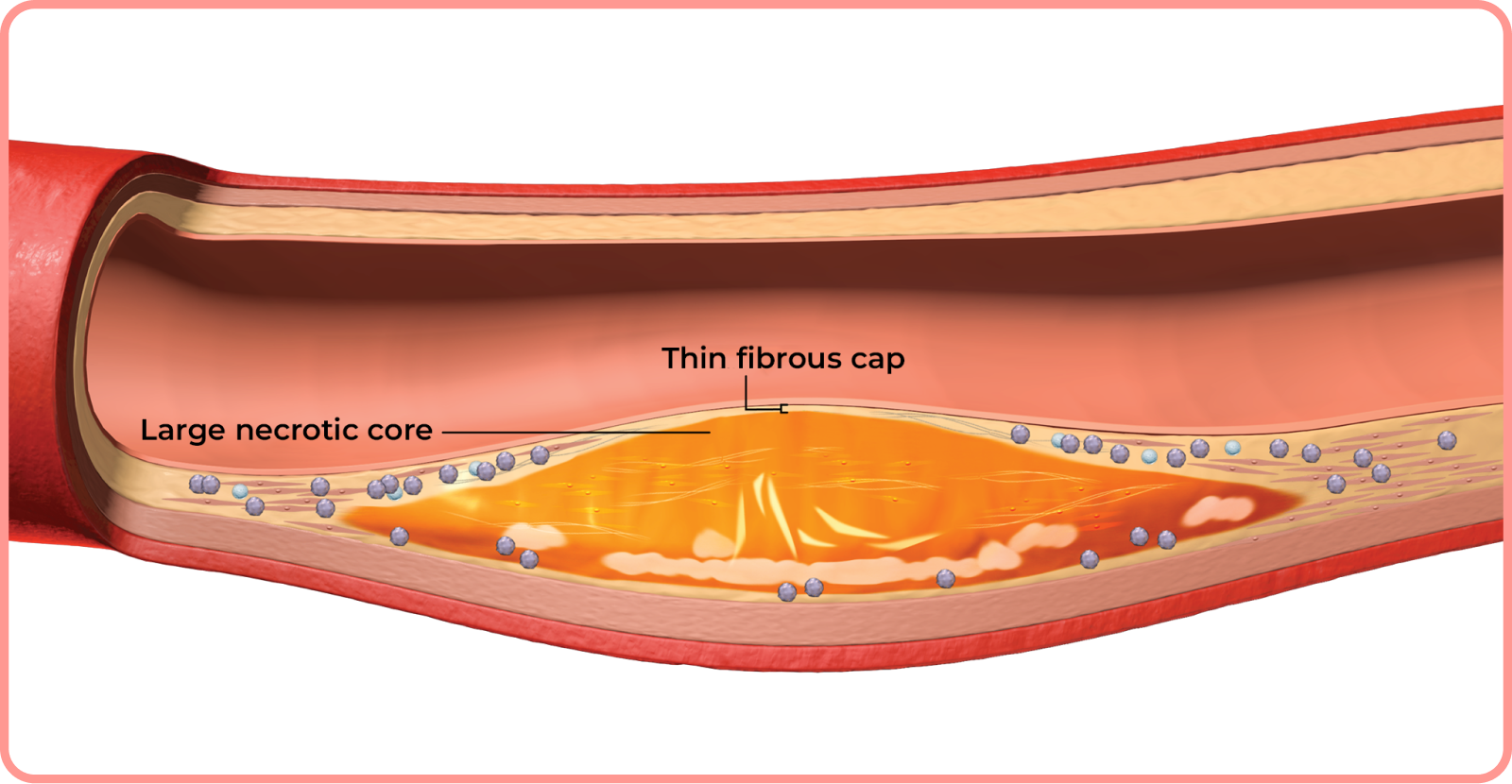
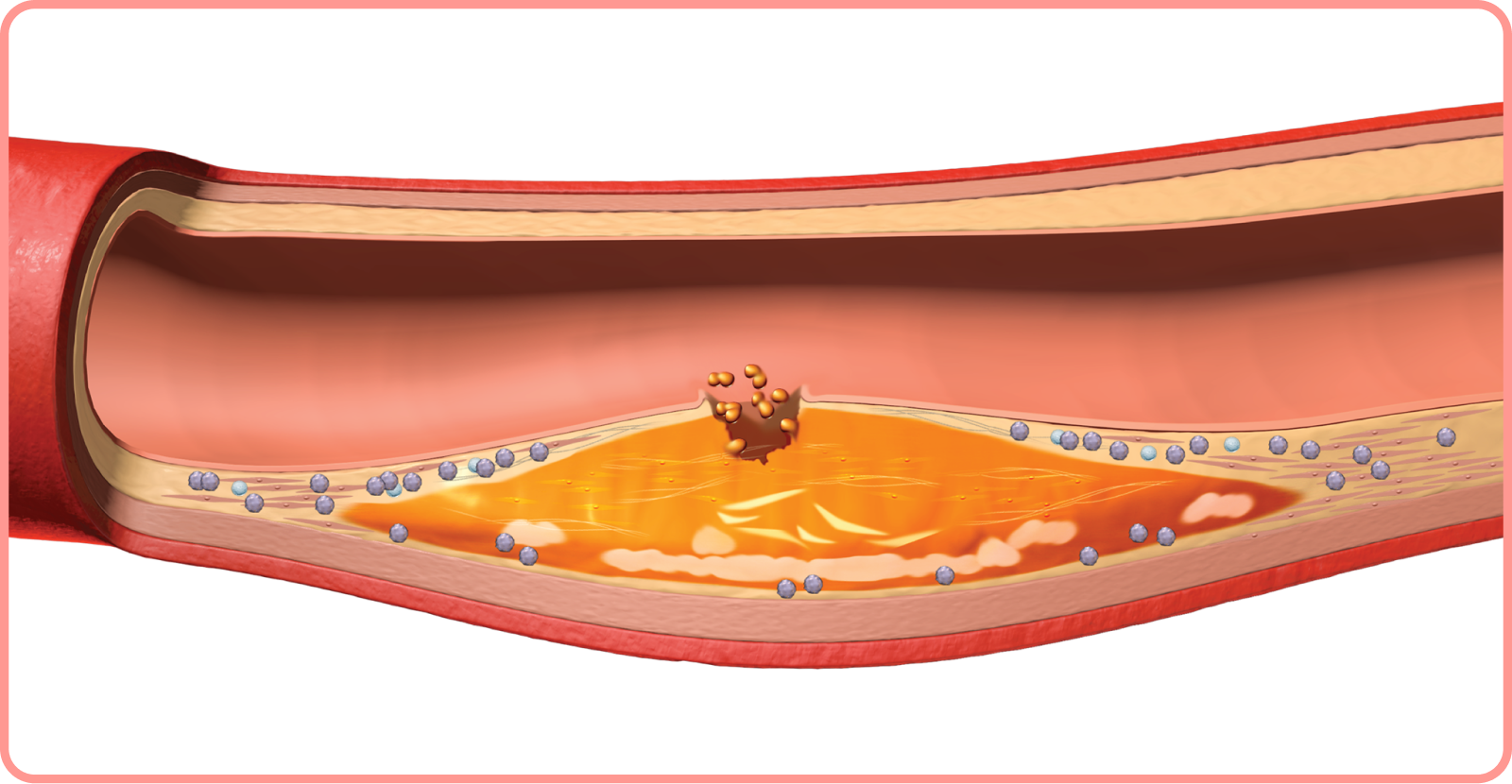
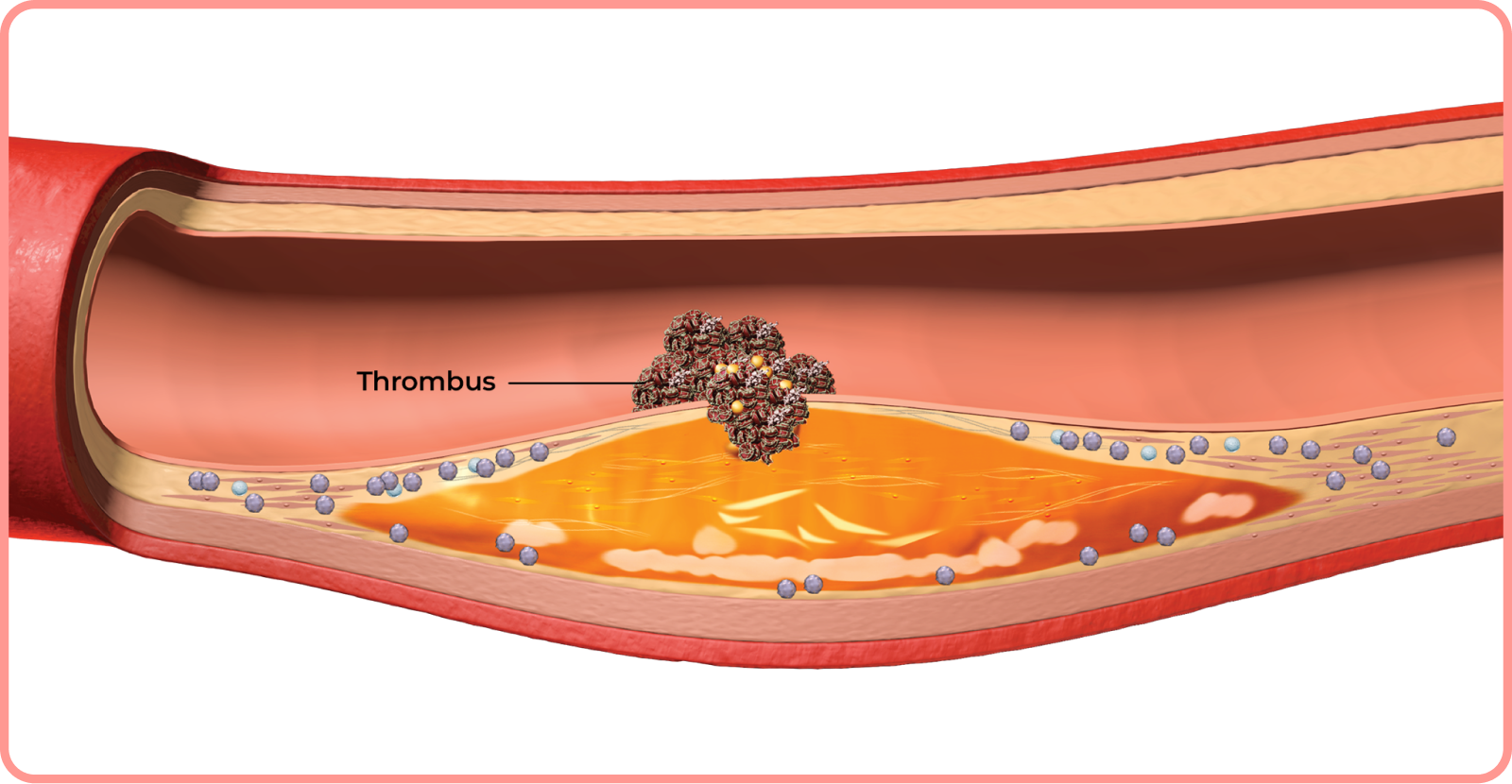
At the site of the rupture, platelets and red blood cells aggregate with the lipid debris to form a thrombus.1-4
The thrombus, in combination with plaque, further restrict luminal blood flow and may result in acute coronary syndrome.1-4
